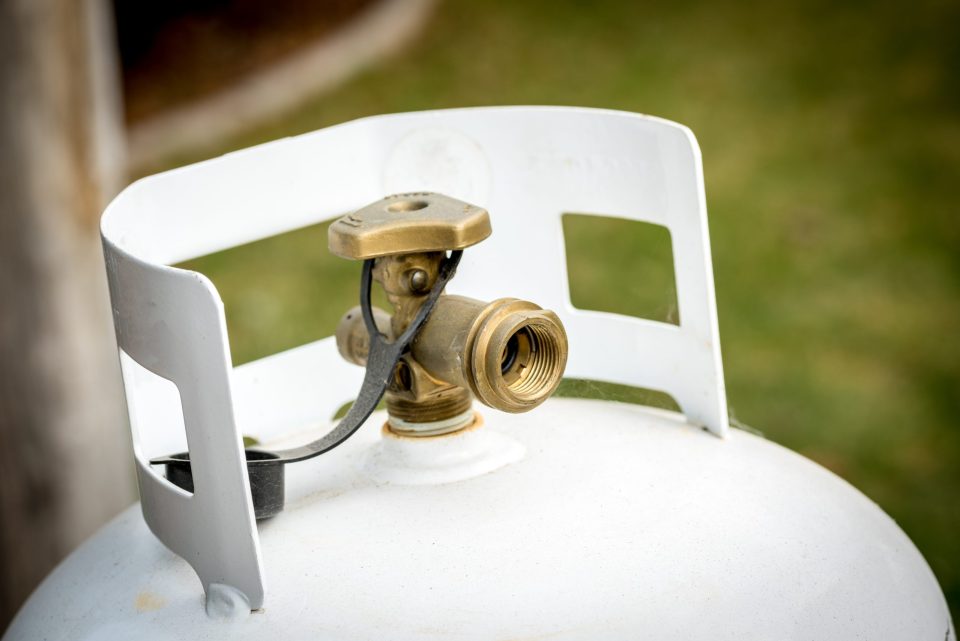‘We want to make sure we reduce emissions while keeping in mind affordability and reliability’
Follow CEC on LinkedIn CEC LinkedIn
Follow CEC on Facebook CEC Facebook
Follow CEC on Twitter CEC Twitter

Ontario radio operators KT and Craig Timmermans power their off-grid business with propane and solar. Photo supplied to the Canadian Energy Centre
Four years ago, Craig Timmermans’ two Ontario radio stations became Canada’s first to go on the air from off the grid.
Faced with an $80,000 connection fee and ongoing electricity delivery costs, Timmermans opted for another solution: solar and propane.
“I did our power calculation: five staff, hot water tank, heating system, etc., right down to a coffee maker…then we need a heating source, so it made sense to go with propane,” he said.
“When I looked at all the different heating systems, I found that propane is hands down the most efficient.”
Now Timmermans is building a new home that will run exclusively on propane. He says he wanted propane appliances due to their efficiency.
“A propane cooking stove is the best cooking appliance…The heat is continuous, it’s instant. It just works so well.”
Lower environmental footprint
Propane serves many purposes in Canada, from supporting mining and oil and gas operations to fueling heating, cooling, cooking and power in remote, off-grid communities.
In these communities, propane can replace diesel with a lower environmental footprint. Propane’s carbon intensity is estimated at 72 grams of CO2 equivalent per megajoule, compared to 100 grams for diesel.
That could be slashed by more than half with a move to renewable propane, according to the Canadian Propane Association (CPA). The CPA has commissioned a new report that looks at potential pathways to producing renewable propane in Canada.

Propane storage tank. Getty Images photo
Pairing with heat pumps and hybrid energy systems
The report serves as the foundation of the CPA’s roadmap for scaling up renewable propane production in Canada.
The CPA says the fuel is ideal for pairing with electric heat pumps to provide back-up heat in low temperatures, especially in remote regions that are not near natural gas grids.
It’s also promising for hybrid systems where solar or wind provides baseload energy and renewable propane provides support when renewables are not available.
Part of propane’s appeal – renewable or otherwise – is that it’s easily liquefied and stored in pressurized cylinders, making it a versatile energy source used almost anywhere, the CPA says.
“We want to make sure we reduce emissions while keeping in mind affordability and reliability as key pillars in any energy transformation,” said CEO Shannon Watt.
“Propane goes where other fuels can’t go.”
Producing renewable propane
Today, most propane produced in Canada comes as a byproduct from natural gas processing.
Among other sources, renewable propane can be co-produced with renewable diesel and sustainable aviation fuel, made primarily from plant and vegetable oils, animal fats or used cooking oil.
Cost is the barrier to renewable propane production – about double what it takes to produce conventional propane, the CPA says.
The United States is offering incentives for renewable propane that are not available in Canada.
Through the Inflation Reduction Act, Renewable Fuel Standard and Low Carbon Fuel Standard, renewable propane producers can receive C$20 per gigajoule (or more than C$30 per GJ in California).
Through Canada’s Clean Fuel Regulations, the incentive is just over C$5 per GJ, or about C$10 per GJ in British Columbia.
“In order to attract investment the same way as the U.S. under the Inflation Reduction Act, we need to have competing measures in place,” Watt said.
“We’ve got the technology and we’ve got the feedstocks. We’ve got a lot of those big puzzle pieces that we need. Now we need the dollars to flow.”

The Ridley Island Export Terminal in Prince Rupert, B.C. ships Canadian propane to overseas markets. Photo courtesy AltaGas
Exporting renewable propane to the world
A large-scale renewable propane industry wouldn’t just benefit Canadians, she said.
That’s because global demand for propane is growing.
Market research firm IMARC Group projects world propane use will rise to nearly 250 million tonnes by 2032, more than one-third higher than demand last year.
The transition to cleaner energy sources is a major factor propelling growth, analysts said.
Until recently, Canada’s only propane exports went to the United States. That changed with the startup of two export terminals at Prince Rupert, B.C.
Since 2017, Canada’s propane exports outside the U.S. have grown substantially, reaching 42 per cent of total propane exports in 2023, according to the Canada Energy Regulator.
“We export more and more propane to non-U.S. locations,” Watt said.
“Now, roughly 50 per cent of Canadian propane is shipped to South Korea, Japan and Mexico, displacing higher emission intensity sources, namely coal and timber.”
Exporting renewable propane would take the benefits a step further, she said.
“That carries the conversation on about reducing global emissions and not just what’s happening in our own backyard.”
The unaltered reproduction of this content is free of charge with attribution to Canadian Energy Centre Ltd.
Share This:





 CDN NEWS |
CDN NEWS |  US NEWS
US NEWS 



































Borrowing More and More – Federal Budget Brings New Programs and Pains: Margareta Dovgal – Resource Works